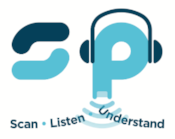Co-occurring Conditions with Dyslexia
Whether you are a teacher or a parent, you may notice that a child with dyslexia seems to have other learning or emotional challenges too.
It is not uncommon for more than one learning difficulty to impact a child’s progress. In a similar way, having a hard time learning to read creates frustrating side effects that can include a lack of confidence or poor emotional wellbeing.
According to the International Dyslexia Association, dyslexia, and attention deficit hyperactivity disorder (ADHD) can coexist up to 30% of the time. It is important to know that one does not cause the other, but both can make reading and learning exceptionally hard.
You can learn more about dyslexia and ADHD in this short video from Understood.org: https://www.youtube.com/watch?v=zDnZsYGNKzs
In addition to this, dyslexia can coexist with other learning difficulties like memory problems, executive function (problem solving and organization), math (dyscalculia), and writing (dysgraphia). These learners have increased risk for behavior or anxiety disorders.
The good news is that there are many ways to help students with learning differences like dyslexia and ADHD. First, ask your child or student what learning is like from their perspective. Talking about learning differences can help reduce anxiety and the tendency to think that they are “not smart enough” for learning.
Next, make sure your learner receives high quality research-backed instruction and intervention for reading and learning so that they don’t fall behind. The International Dyslexia Association recommends an approach called Structured Literacy when teaching learners with dyslexia how to read.
Last, use all the wonderful tech tools and accommodations available to neurodiverse learners today. It’s a great time to have dyslexia! Consider tools like:
ReaderPens that allow learners to successfully decode unknown words in print the moment they see them
Audiobooks that allow learners to access grade appropriate text, themes, and vocabulary
Typing on a computer or tablet rather than writing by hand
Voice typing into a Word or Google document rather than writing by hand
Apps that make it fun to practice decoding, like GraphoGame (www.graphogame.com)
A reading window or ruler to help read in a straight line and maintain focus
Your learner is on a journey to become a reader and scholar. Support and validate learning differences and neurodiversity by talking about what it’s like to learn differently and how to use tools that level the playing field. Vive la différence! Being different is a good thing! Find out more by clicking on the resources below.
Resources:
Understood.org: https://www.youtube.com/watch?v=zDnZsYGNKzs
Michigan Medicine @ University of Michigan: https://www.uofmhealth.org/health- library/te7252
The International Dyslexia Association: https://dyslexiaida.org/attention- deficithyperactivity-disorder-adhd-and-dyslexia/
Child Mind Institute: https://childmind.org/article/understanding-dyslexia/
Dyslexia Help @ University of Michigan: http://dyslexiahelp.umich.edu/
Kristen Koeller – US Director of Education, Scanning Pens March 2021
